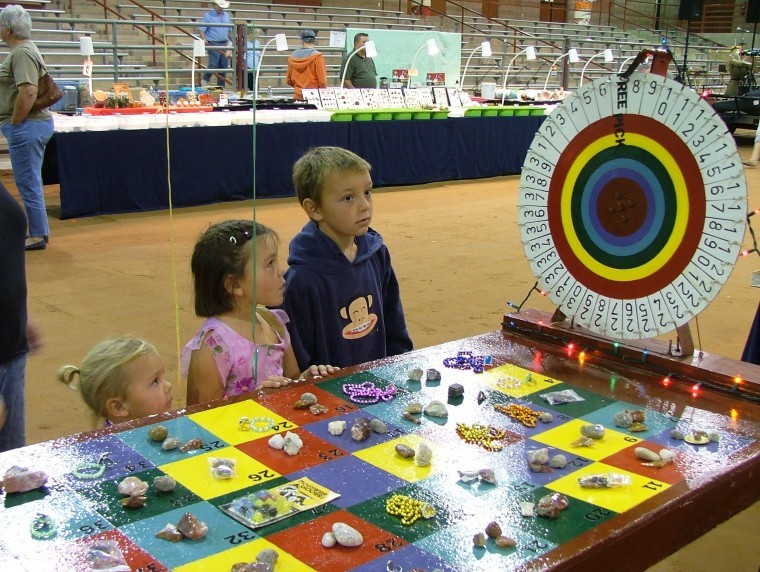Some information may be outdated.
Rock hounds, collectors and the geologically-curious can enjoy a weekend of exploration at the Rock, Gem and Mineral Show held Friday, Saturday and Sunday, Oct. 11, Oct. 12 and 13 at the Old Spanish Trail Arena.
The annual show has been a Moab tradition for 54 years.
Vendors, displays and the traditional spin wheel will be there, offering geologic prizes for both adults and children.
“The kids love the spin wheel. It’s not really a game of chance: They will always win something,” said Jerry Hansen, the president of the Moab Rock Club, which hosts the show. “It’s there for their enjoyment and to enjoy what they would find in nature.”
There are also field trips on Saturday and Sunday to Dubinky Well and Yellow Cat, two areas north of Moab. Field trips leave at 9 a.m. from the show.
On Satuday the group will travel to the Dubinky Well area, which is known by rockhunters for its purple Dubinky agate, a deep purple crystal.
The field trip on Sunday is to the Yellow Cat area, north of Arches National Park, known for Yellow Cat redwood.
“It’s a limb cast,” Hansen said. “It’s not the petrified wood itself.”
The Moab Rock Club started in 1959 with a bunch of people interested in geology.
It is filled with people who enjoy the outdoors and get out and about, Hansen said.
“Rocks are their primary reason,” Hansen said. “Moab has a multitude of pertrified wood, agate, and other collectible items, as well as dinosaur bones and other items that can’t be legally taken off government land.”
Up until three years ago the club’s name was Moab’s Points and Pebbles.
“People weren’t relating Points and Pebbles as a rock club,” Hansen said. So they changed the name to Moab Rock Club.
The club meets the third Thursday of every month at 7 p.m., at the Grand Center.
“Periodically we have a show and tell session,” Hansen said. “Folks come in to talk about geology or earth science.”
The club also focuses on responsible rock hounding
“We don’t advocate hauling off things that are illegal,” Hansen said. “BLM has specific limits on how much petrified wood you can have.”
Vertebrate fossils, such as bones, teeth, skin impressions, footprints, trail drags and other traces of animal activity may not be collected from state or federal lands.
“We respect property rights,” Hansen said. “If there is an area we want to go into, we check with BLM or adjacent landowners to make sure.”
“We want people who are out there to be responsible for their actions.”
Appreciate the coverage? Help keep local news alive.
Chip in to support the Moab Sun News.





